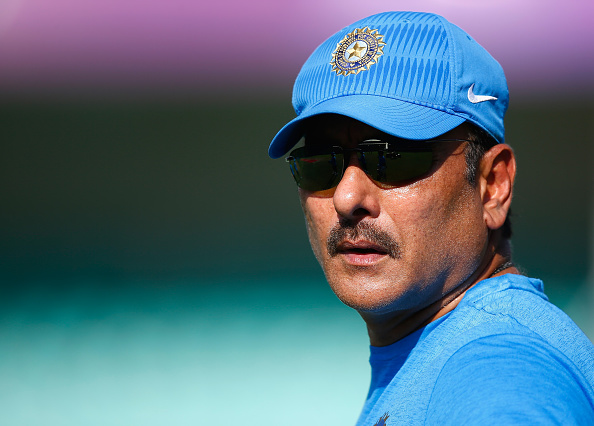India vs South Africa | Dropping Bhuvi wasn’t chopping and changing, it was decision making, says Ravi Shastri
Head coach Ravi Shastri, who faced vile criticisms for benching Bhuvneshwar Kumar in the Centurion Test, has justified it as decision-making and not chopping and changing tactics. He has also clarified that it was a no-brainer to bench Ajinkya Rahane after his struggles in the nets and the matches.

India’s team management came under fire during the Test series for issues pertaining to team selection and lack of practice sessions in overseas conditions. And after the team conceded the three-match Test series in the first two games itself, the criticisms saw no end as most former players and pundits jumped on the bandwagon. However, after India finally salvaged some prestige by winning the third and final Test of the series at Wanderers, team head coach Ravi Shastri decided to decode the management’s decisions in an interview with TOI.
The harshest criticism that the team faced was after the management’s shocking decision to replace Bhuvneshwar Kumar with Ishant Sharma in the second Test in Centurion, following the seamer’s brilliant six-wicket haul in the first Test. However, Shastri argued that the decision was not brainless as widely believed, but was taken after observing the pitch.
“Watch India's first innings at Centurion. Quinton de Kock was keeping up front for Vernon Philander. That's how slow the wicket was. Bringing in Ishant made all the difference. He has been phenomenal. We knew Bhuvi had to be played at the Wanderers and in fact, given the Centurion wicket - it had nothing for pace bowlers, leave alone swing - we knew Bhuvi would be fresh for the third Test,” said Shastri in the interview.
The Centurion wicket - it had nothing for pace bowlers, leave alone swing
Ravi Shastri, on why Bhuvneshwar Kumar wasn't selected in Centurion
“Ishant bowled beautifully in the first innings at Centurion, he got us both, AB & Faf and what a tireless effort it's been from him. When did Ishant last bowl like this series? Not even Perth.”
Overlooking Ajinkya Rahane, the only Indian batsman to have averaged over 60 in South Africa before the series, from the first and second Test was also a source of denigration by many, who believed that the management had lost it. However, Shastri reiterated Kohli’s argument to pick Rohit Sharma purely based on form.
“Right from the beginning, there was no doubt in the mind of the team management that Rohit was the batsman in form while Ajinkya was struggling, not just on the field but in the nets too. Rohit was averaging more than 200 in Tests and had scored around 1200-odd runs in ODIs. So, what does the team tell him? Your runs don't matter because that's how it works? Performances count and that makes this whole talking point a no-brainer. We all know what Ajinkya is capable of, but before coming here, he was averaging about 30 all through 2017,” pointed Shastri.
All the turmoil and commotion came to an end in the third Test when both Rahane and Bhuvneshwar was brought into the side and finally gave India the win, which had been narrowly evading them from the first two Tests. However, Shastri stated that it was no chopping and changing and the management went with the best performing lot for it.
“That's why I'm saying, where are the experts now? What chopping and changing? Sometime during the Centurion Test, Ajinkya was getting back into his rhythm. He was knocking well in the nets and Rohit was struggling, so we decided to do whatever looked better at that point in time and Ajinkya was in the eleven. And he scored at the Wanderers.”
“Dropping or picking Bhuvi was not chopping or changing. It was a decision taken according to the pitch and the conditions. It's simple, had we scored more runs in the second innings at Cape Town and the second innings at Centurion, this whole series would've been different,” he said.

Comments
Sign up or log in to your account to leave comments and reactions
0 Comments